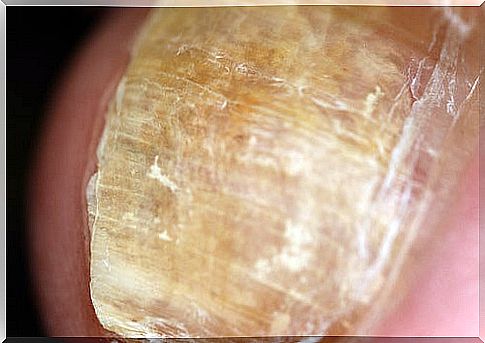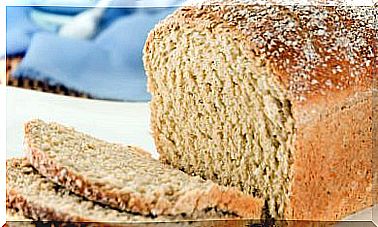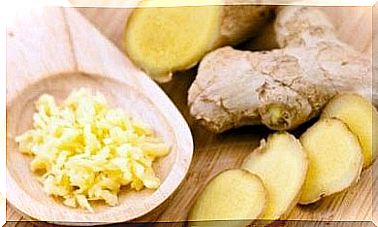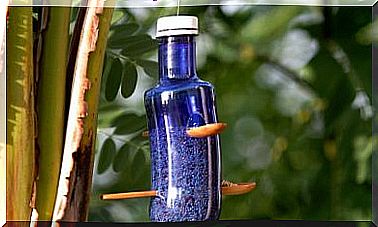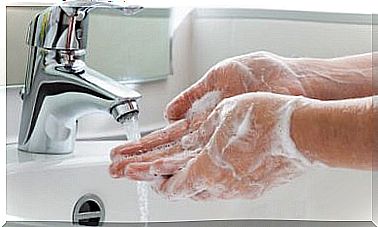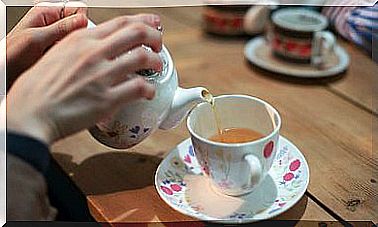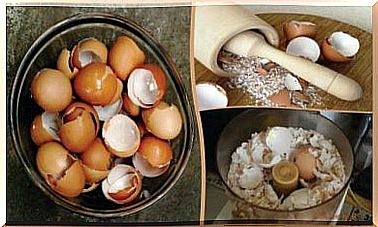Onychomycosis: When Fungus Is On The Nails
Some home remedies can help you get rid of nail fungus. Essential oils, used with caution, can be very helpful. However, it is good hygiene and dry feet, which will help us the most to prevent and eliminate them.
While it is simply known as nail fungus, the scientific or medical name for this condition is onychomycosis. This infection changes the appearance of the nail, affecting its color and thickness. Learn more about this problem in the following article.
What is onychomycosis?
Having nail fungus is a very common condition in the population around the world, which begins in a single finger (of the feet or the hands). It usually spreads to the rest due to lack of treatment. Some may also develop athlete’s foot because it is the same fungus that affects the skin.
Onychomycosis can only be seen by changes in the nail, be it color, shape, or thickness. On the other hand, it does not present symptoms such as aches or pains. Many people take a long time to treat nail fungus, which is why it takes several months or even years to fully heal.
Although it is usual to treat nail fungus as an aesthetic alteration, in very advanced cases it can cause chronic pain that is difficult to solve. Early diagnosis is ideal to permanently eradicate the fungus .
Home remedies for nail fungus
To find the most appropriate treatment for onychomycosis according to the particularities of each case, it is essential to go to a medical consultation. Here are some home remedies that can help, but in no way replace the professional’s instructions.
Tea tree essential oil
Tea tree oil is one of the best-known natural treatments for onychomycosis. It is used for mild or moderate cases, as it is a powerful fungicide and antiseptic, as confirmed by scientific studies.
Remember that essential oils are incredibly concentrated and condense all the power of the plant’s properties in very little quantity. For this reason, they should not be ingested or come into contact with delicate areas such as the eyes.
Likewise, they should always be applied topically and extremely diluted in other non-essential oils. Always purchase therapeutic grade essential oils from your herbalist. They should not be used in children and pregnant women should be informed about the type, dose and other recommendations.
A mode of use indicated by traditional medicine is as follows. We recommend that you consult with a professional before resorting to him:
- Cut the nail trying to remove as much as possible, the entire affected area.
- Wash the nail to remove any debris, and dry it.
- Mix 2-3 drops of tea tree essential oil in a tablespoon of the oil of your choice (coconut, olive, almond, etc.). It is important to maintain a dilution of no more than 2%.
- Apply the mixture on the nails with cotton.
- Leave on for 15 minutes to absorb.
- Repeat 2-3 times a day.
Apple cider vinegar
The second treatment that could help treat nail fungus is apple cider vinegar. It has proven properties that are beneficial for burns, dandruff and scars, and it is also said to be antifungal (although there is not much evidence on this).
Traditional medicine advises purchasing 100% concentrated, unfiltered, organic apple cider vinegar for results. Again, another very widespread mode of use, but that you should not carry out without the permission of the professional:
- Cut the nail trying to remove as much as possible the entire affected area.
- Wash the nail to remove debris and dry it.
- Make a foot bath with equal parts vinegar and warm water.
- Soak the affected areas for 20 minutes.
- Dry well with a clean towel, emphasizing the affected nail but also between the fingers.
- Do not reuse the towel before you wash it again.
- Repeat 2 times a day for faster results.
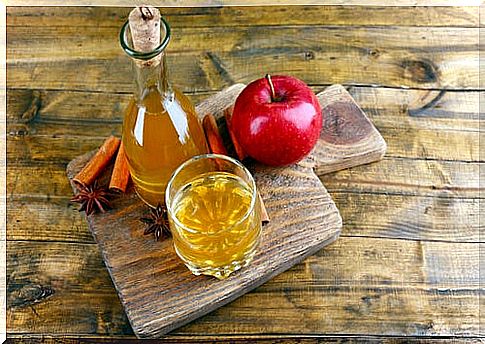
Other essential oil remedies
- Place two cups of water and three tablespoons of thyme, another proven antifungal, in a saucepan. Traditional recipes call for boiling for five minutes, turn off the heat, cover and let cool. Finally, soak a cotton ball or swab and place on the nails with onychomycosis.
- Boil a liter of water with 10 split cinnamon sticks, whose properties are also supported by scientific studies. Lower the heat to a minimum and cook for five minutes. Let stand 45 minutes and, while still warm, pour into a container where you can dip your nails.
Other remedies with ingredients from your kitchen
- Mix baking soda, with proven antifungal properties, in water and form a paste. Pass this preparation on a cotton ball and then spread it all over the nail, trying to get it to also enter the skin below the affected nail. Leave a few minutes, rinse and dry.
- Extract the juice from an onion and wet a cotton ball. Rub on nail fungus. You can also directly pass the onion cut in half. Both methods come from ancient medicine, but in fact some studies have shown antifungal properties of onion.
- Mix one tablespoon of lemon juice , five drops of hydrogen peroxide and two tablespoons of aloe vera gel, another ingredient with proven effects to treat these skin problems. Place on the affected nail and let it dry on its own. The combination with lemon and hydrogen peroxide, however, does not have scientific support.
- Boil five cloves of garlic (effective against certain types of fungi, according to this research) in a cup of water. Pour into a container with cold water and put your feet there, letting it rest for 15 minutes. This is a recipe for traditional medicine and has not been scientifically proven.
Take Notes: 5 Ways To Use Lemon Baking Soda In Household Cleaning
Final recommendations
Remember to always buy the highest quality products possible and follow the instructions exactly if you are going to use essential oils. These are very concentrated and can cause reactions if we do not use them well. Always consult a health professional before resorting to them.
Main image courtesy of © wikiHow.com
